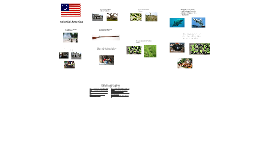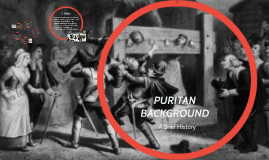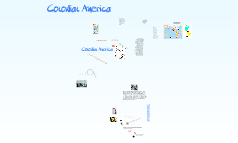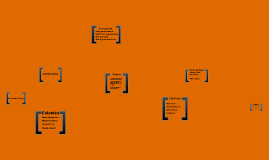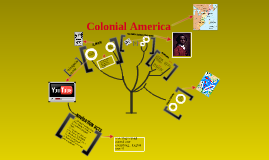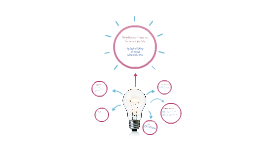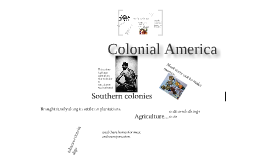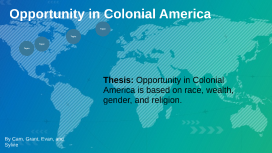Colonial America
Transcript: Colonial America How did people get to America? Who was here first? Extra Credit!!!! What does this map suggest about how people first came to America? (Back Arrow to see map again) The first inhabitants of the American continents were nomadic hunters and gathers. These nomads probably arrived in North America around 40,000 years ago, following a land bridge that formed between North America and Asia. It is believed that another group of humans migrated from Asia into North America around 12,000 years ago. Some scientits also think that some people might have used boats to follow ocean currents to the tip of South America, while others arrived following ice from Western Europe. As these various groups traveled into the new world following wild game, they spread out across the land, forming new cultures, and in some cases, complex civilizations. Which map is more accurate? Why? More Extra Credit!! Write a story using the symbols below. Be sure to write it in English as well. How did the first Europeans get here? History textbooks often claim Christopher Columbus discovered America. While Columbus was among the first Europeans (the Norse before him, and possibly the Chinese and an Irish monk) to explore the New World, he found that the Americas were already inhabited. Columbus hardly made it to the American continents first. Interested in the Norse (Vikings)? According to the Icelandic sagas ("Eirik the Red's Saga" and the "Saga of the Greenlanders"—chapters of the Hauksbók and the Flatey Book), the Norse started to explore lands to the west of Greenland only a few years after the Greenland settlements were established. In 985 while sailing from Iceland to Greenland with a migration fleet consisting of 400-700 settlers and 25 other ships (14 of which completed the journey), a merchant named Bjarni Herjólfsson was blown off course and after three days sailing he sighted land west of the fleet. Bjarni was only interested in finding his father's farm, but he described his discovery to Leif Ericson who explored the area in more detail and planted a small settlement fifteen years later. The sagas describe three separate areas discovered during this exploration: Helluland, which means "land of the flat stones"; Markland, "the land of forests", definitely of interest to settlers in Greenland where there were few trees; and Vinland, "the land of wine" (or as suggested by modern linguists "the land of meadows"), found somewhere south of Markland. It was in Vinland that the settlement described in the sagas was planted. All four of Erik the Red's children were to visit the North American continent, his sons Leif, Thorvald and Thorstein and their sister Freydis. One of the sons, Thorvald, died there. More about colonization? European nations came to the Americas to increase their wealth and broaden their influence over world affairs. The Spanish were among the first Europeans to explore the New World and the first to settle in what is now the United States. This is an engraving of Columbus meeting the native Cubans. Do you notice what the Eropeans with Columbus are holding? I can see three things that stand out. What are the American Indians holding? How many things can you notice? What do you think the artist is trying to say? What else do you notice? Write a short essay in which you explain how you interperet the theme of this piece. Be sure to include ideas from class discussion, the reading we have done, and the images in this picture to help me understand your ideas. By 1650, England had established a dominant presence on the Atlantic coast. The first colony was founded at Jamestown, Virginia, in 1607. Jamestown was the first English colony in America to survive and become permanent. It was settled in 1607 and supported itself through tobacco farming. It was later the capital of Virginia and the site of the House of Burgesses. What is the most important thing to notice in the next pictute? Why is that important? Things did not go well at first. Who are the people in this next picture? What's happenning? Why is that important? Compare the picture you just saw with this next one. What's interesting about the two? Many of the people who settled in the New World came to escape religious persecution. The Pilgrims, founders of Plymouth, Massachusetts, arrived in 1620. What is the most important thing to notice about the next picture? Why is that important? In both Virginia and Massachusetts, the colonists flourished with some assistance from Native Americans. New World grains such as corn kept the colonists from starving while, in Virginia, tobacco provided a valuable cash crop. By the early 1700s enslaved Africans made up a growing percentage of the colonial population. Who is responsible for America becomming a powerful nation? 1000. Leif Ericson discovers Vinland (New England). 1492. October 12. Columbus discovers the New World. 1497. The Cabots discover the continent of North America. 1498. Columbus on third voyage






